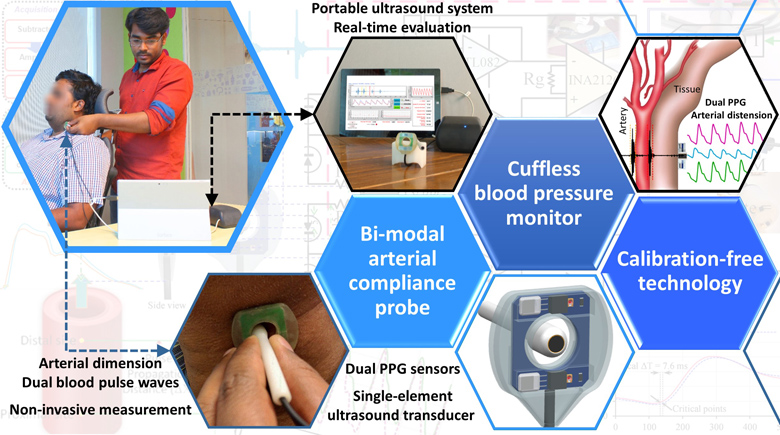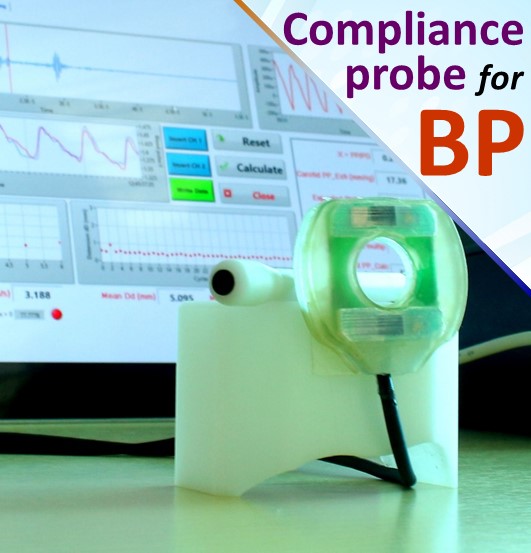
Non-invasive measurement of Blood Pressure (BP) has well-established utility in screening, clinical diagnosis and patient follow-up for a variety of critical disease conditions. Each usage scenario of BP poses unique functional requirements and challenges. The emerging field of non-invasive, cuffless technologies offers rapid, real-time, and continuous measurement of BP from superficial arterial sites. Cuffless BP methods, mostly based on conventional pulse transit time measures, need frequent re-calibration to account for both population-specific and patient-specific calibration coefficients for accurate measurement, and as a result have not been widely accepted in clinical practice. These call for the development of an easy-to-use, reliable, cuffless technique for BP measurement, that does not require patient-specific or population-specific calibration, and which can potentially be used in clinical, field and low resource settings. Healthcare Technology Innovation Centre (HTIC) of Indian Institute of Technology (IIT) Madras has developed and validated a method and technology for calibration-free, cuffless evaluation of BP parameters from superficial arteries. This novel method employs a bi-modal arterial compliance probe for simultaneous measurement of local pulse wave velocity and arterial dimensions through HTIC’s proprietary ARTSENS® technology from a small arterial section. These parameters are utilized to directly calculate BP using a set of custom mathematical models, without the requirement of any calibration procedure. The feasibility of the developed measurement methodology in estimating BP and local arterial stiffness indices from the carotid artery – an indicator of central aortic conditions – has been demonstrated in controlled laboratory settings and in limited clinical settings. The study also validated the potential utility of the proposed method and system in hypertension screening. This cuffless, calibration-free technology offers several advantages over BP devices that are conventionally used and it could be used in a wide range of clinical and non-clinical applications.

